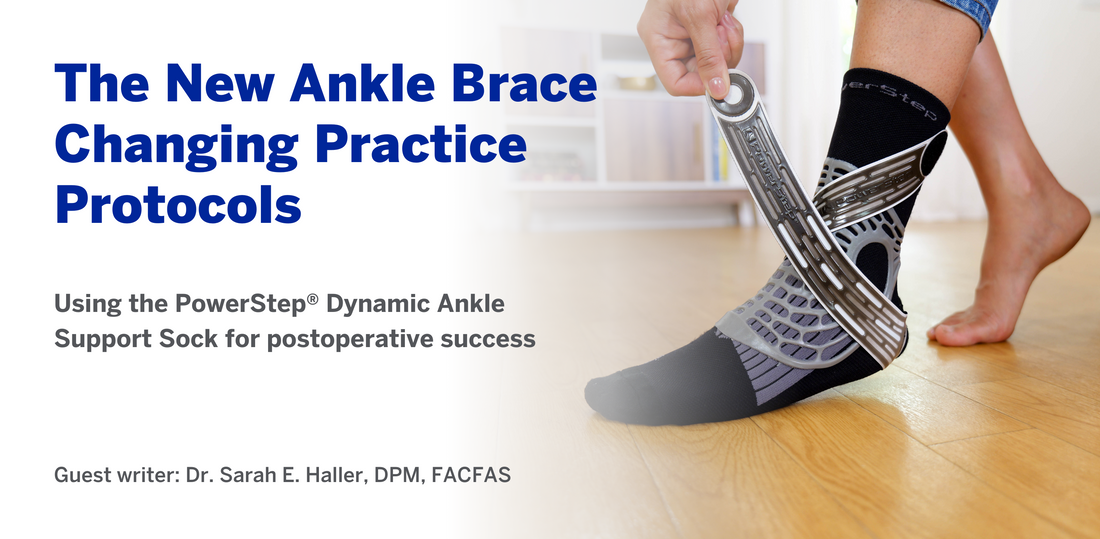By Sarah E. Haller, DPM, FACFAS
Fellowship Trained Foot + Ankle Surgeon

The New Ankle Brace Changing Practice Protocols
My postoperative protocol has changed progressively over the years as the technological advances for ligament and tendon reconstruction continue to evolve.
After these procedures, it is imperative to get a patient moving safely as soon as possible to prevent scar tissue and adhesions from forming around your surgical site and, most importantly, to regain that proprioception mechanism.
This is where the big part of my practice took a turn. I struggled for a long time with certain bracing that allowed the mobility and the natural form of movement postoperatively.
After my patients transitioned out of a cast/splint, they progressed into traditional bracing which is usually a multi-ligamentous game-ready brace that proves to be very restrictive. While that is appropriate for some time after procedures, I also really like to incorporate compression into my postoperative protocol as well as early PT. These two things, compression and bracing, become very bulky inside patients’ shoes and cleats. Which easily leads to noncompliance and edema.
To help resolve this, I have been on the hunt for a compression brace with support. When I was introduced to DASS (Dynamic Ankle Support Sock), I was immediately intrigued: compression and ankle support in a low-profile design.
I thought what I was doing postoperatively until this point had generated good results for both me and my patients. However, the DASS brace provided me with another avenue of care: conservative and post-op. DASS is a toe encompassing brace that provides compression (8-15 mmhg) with structural support for the ankle and midfoot, which includes, but it’s not limited to the lateral ankle, Achilles, Lisfranc, and the medial structures (deltoid and PT).
I now incorporate my patients directly into DASS throughout their postop, so that they can start to do normalized PT exercises that are less restrictive than they are with bulky bracing. Not only does DASS help with compliance, but it also helps facilitate management of the tendon strength and the nerve intervention to the ligament reconstruction.
Overall, not only am I happy with DASS, but most importantly my patients continue to rave about the comfort and overall feeling of stability. They really enjoy the compression that doesn’t leave them with banding at the forefoot where the “traditional brace” ended. People are back to activity faster and tend to wear this for 12 weeks postoperatively especially on the field.

